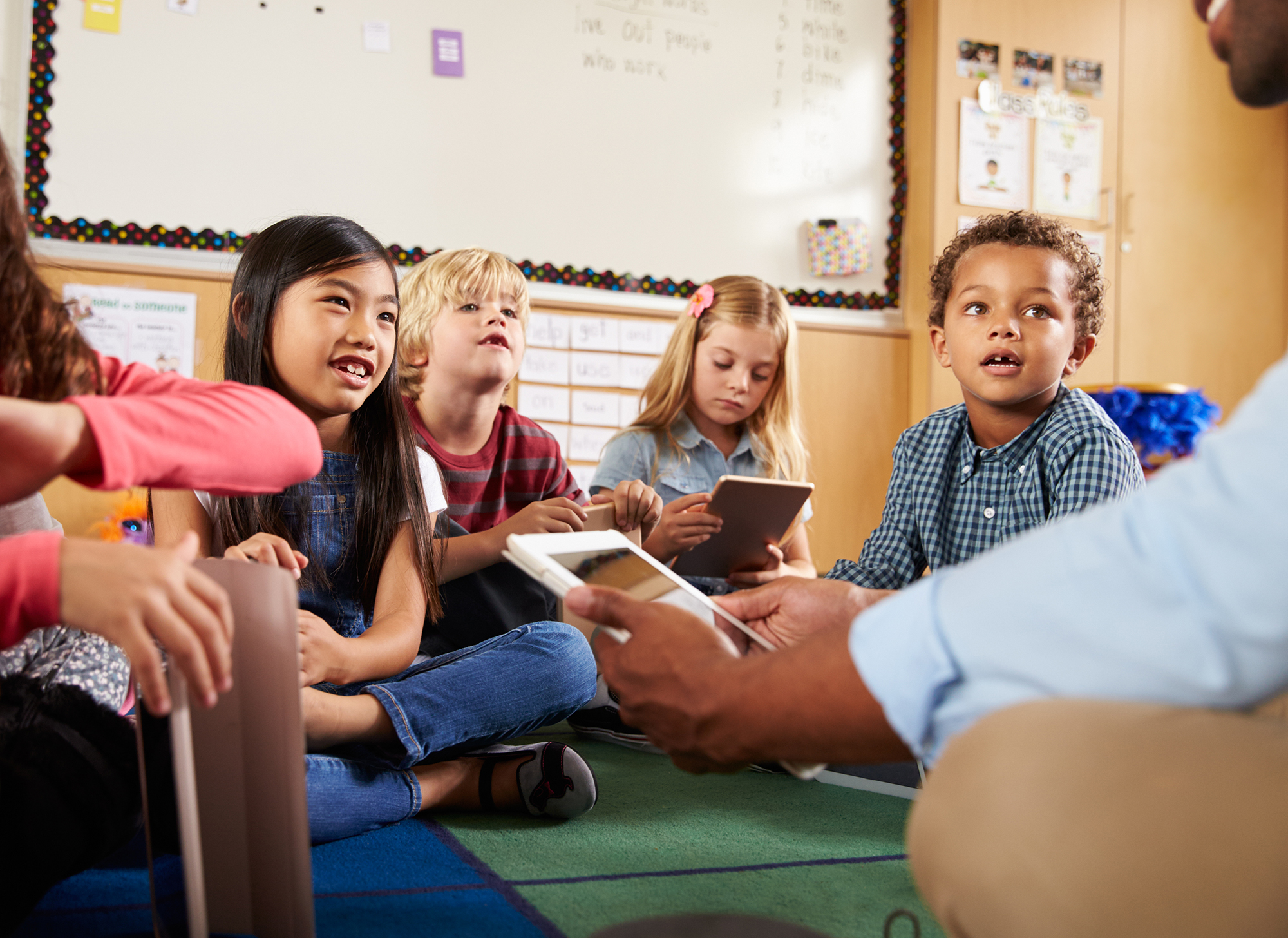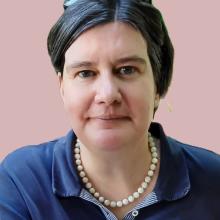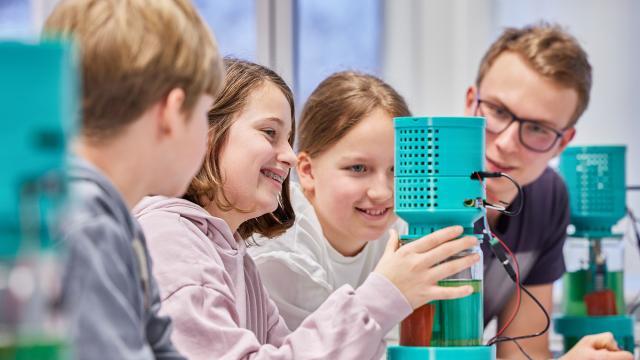

Why early exposure to other languages has nothing but advantages
In our educational institutions, German is considered the language in which learning content is taught and in which communication about this learning content takes place. At the same time, all learners are expected to continuously improve their German language skills, from kindergarten to university in most cases. At the same time, around 21.2 million people with a migration background live in Germany, according to a statement issued by the Federal Statistical Office in May 2025. Although German plays an important role in the majority of families with a migration background, at least one other language is spoken in half of them.
“This is not a shortcoming, but a huge resource that unfortunately remains untapped all too often,” emphasizes Professor Anja Wildemann. Together with her team, she is dedicated to metalinguistic awareness, among other things. Put simply, this is “the mental ability to think about language and languages, to reflect on their form, structure, and use, and to use them consciously.” It is therefore about knowledge of language—and the use of this knowledge. “This includes, for example, the question of why sentence structures differ or which words are used in which situations and how.”
Because what some people may not be aware of, for example, is that the German language has a number of peculiarities that native speakers usually internalize automatically in the course of language acquisition. However, these peculiarities require more attention from learners who are acquiring German as their second, third, or fourth language: “Das Brot einkaufen” (buying bread) becomes “Morgen kaufe ich das Brot ein” (tomorrow I'll buy the bread) in a different sentence structure. Separable verbs are not found in almost any other language. “This is just one example of the peculiarities of the German language that can be brought to the learners' attention by comparing languages,” explains Anja Wildemann.
Metalinguistic awareness in elementary schools
Wildemann's research team wants to find out more about the language awareness of schoolchildren and how it can be promoted. They are investigating how the presence of multiple languages can be used for learning. In various research projects, they have conducted so-called metalinguistic conversations with primary school pupils: “This means that, with the help of short multilingual texts, the pupils were encouraged to talk about languages, i.e. to act metalinguistically, by means of targeted questions.” One question asked the pupils was why sentences in German often consist of more words than in other languages.
Anja Wildemann: "Children have subjective ideas about this, which we refer to as preconceptions. Over the course of their schooling, these early, sometimes naive concepts change more and more into what we call scientific concepts as they learn. In this transition, there is also what we refer to in research as intermediate concepts. A conceptual change takes place. In science and mathematics education research, conceptual change is a well-researched explanatory approach to the transformation of knowledge structures. This approach has hardly been explored in language education research. I have entered uncharted territory here," says the professor, describing the unique nature of her research.
Language analysis skills – more pronounced in multilingual children
In studies, Wildemann and her team compared German-speaking and multilingual children. They found that multilingual children express themselves at a higher level of metalinguistic proficiency on average. For example, children who are familiar with both German and Turkish were able to determine that German uses two words for an article and a noun (e.g., das Haus), while Turkish does not use articles. (ev).
In German, the article changes in the plural according to the gender and inflection, i.e. the form of the noun (die Häuser), while in Turkish, the plural is marked by the word ending -ler (evler). Anja Wildemann: “While German is an inflecting language, Turkish is an agglutinative language that strings word parts together.” This explains why sentences in Turkish have fewer words than in German. “Such language analysis skills were generally more pronounced in multilingual children than in monolingual children.” The researcher emphasizes that it has long been known from research that “the earlier languages are acquired, the better the neural connections are and the more successful language acquisition is.” Learning additional foreign languages is also easier for early multilinguals than for those who encounter other languages later in life. “By the way, ‘later’ means after the age of six,” emphasizes the professor.
“The earlier languages are acquired, the better the neural connections are and the more successful language acquisition is.”
Anja Wildemann
Anja Wildemann adds that her studies have also shown that the language awareness of monolingual students – i.e., children who have only spoken German up to that point – increases when they come into contact with other languages in the classroom, for example through language comparisons. “It is therefore worthwhile to incorporate the languages of multilingual classmates into the classroom, as everyone benefits,” the researcher affirms.
Advantages for further reading and writing skills
Anja Wildemann's focus on language awareness is no coincidence: the skills and abilities associated with it have an overall positive effect when it comes to learning to read, write, and speak. In fact, promoting language skills and language awareness is considered one of the central tasks of German language teaching in elementary school. Language comparisons are recommended by the Conference of Ministers of Education. “Multilingualism in the classroom is an asset that can already be exploited in primary school,” says the researcher. And: “Children in primary school show great curiosity about languages.”
Linking other languages to German lessons
But how can this be achieved in everyday school life? Other languages could be linked to German lessons. They could be used – in guided situations – for reflection and language analysis: “Multilingual picture books can be helpful here.” Objects in the classroom could also be labeled in multiple languages. “The aim is to recognize similarities and differences between languages,” summarizes the professor.
However, integrating different languages into German lessons is not only beneficial for learners, but can also be a possible aid for teachers: “This enables them to better understand why multilingual learners make certain mistakes, for example.” For teachers looking for materials, Anja Wildemann has therefore teamed up with Lena Bien-Miller (JGU Giessen) to launch the website “Deutsch unterrichten – mit Lingo und Parla” (Teaching German – with Lingo and Parla) . Here, teachers can find language profiles and free materials. Wildemann's team is currently developing a diagnostic tool for daycare centers as part of the “Sprache im Alltag beobachten (SiAb)” (Observing Language in Everyday Life) project. They are working on an observation procedure that educational professionals can systematically integrate into everyday life to assess the linguistic development of monolingual and multilingual children and use this information to develop support and assistance programs. The “FirstClass – erstklassig starten” (FirstClass – a first-class start) project, on the other hand, provides support for children starting school in 60 primary schools in Rhineland-Palatinate.
“The earlier children come into contact with other languages, the better,” concludes Anja Wildemann from her research. Social and individual multilingualism should not stop at school. “Language bans and German requirements are not helpful; they restrict learners in their cognitive and linguistic development and identity formation. Only those who can fully exploit their potential can also develop well in German.”

WANT TO FIND OUT MORE ABOUT THIS TOPIC?
You can find further information in the following selection of scientific literature:
Wildemann, A. (2023). Conceptual Change und sprachbezogene Konzepte – eine theoretische Annäherung. Empirische Pädagogik 4/23, 366-380. (Grundlagenbeitrag)
Wildemann, A. (2024). Vergleich macht glücklich - und wissend. Durch Sprachvergleich metasprachliches Wissen erlangen. Deutsch 5-10. Mehrsprachigkeit. Ausgabe 81/2024,18-25.
>> READ PRACTICLE GUIDE
Wildemann, A. & Kellermann, K. (2025). Conceptual Change and Causal Relations. Ontological and epistemological basic concepts within the conceptual change approach using the example of causal relations. Pedagogical Linguistics. DOI: 10.1075/pl.24020.wil (Forschungsbeitrag)
(Forschungsbeitrag)

Diese Themen könnten dich auch interessieren:


